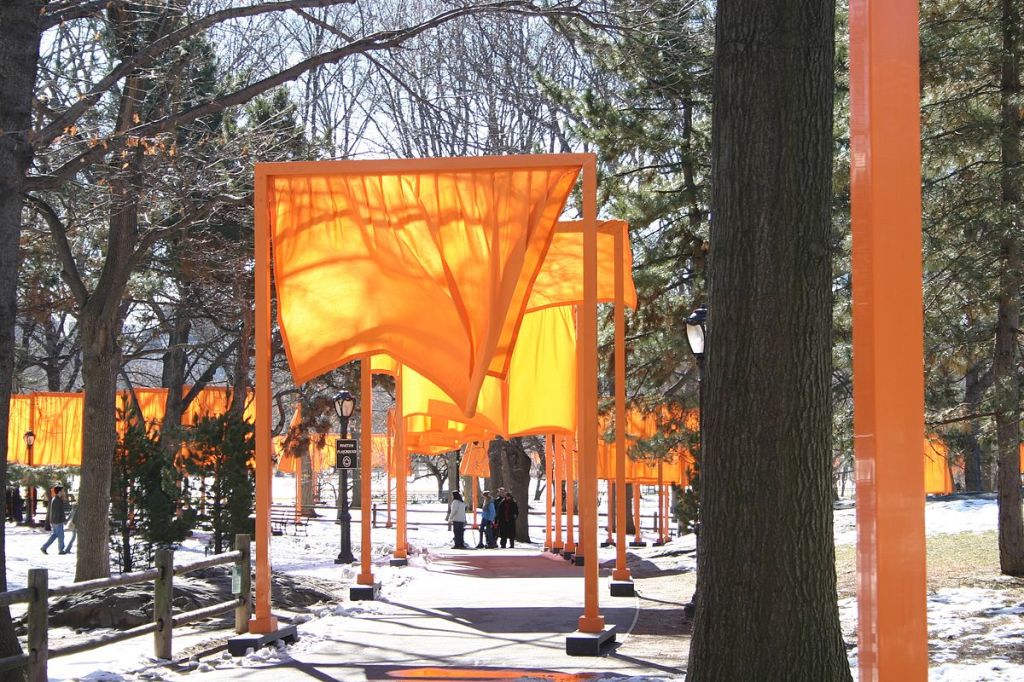3.16: Putting It Together
- Page ID
- 28240

All communication, including art as a form of visual culture, takes place in multiple contexts. In the beginning we discussed Robert Capa’s photograph, The Falling Soldier, and how the context of its viewing in America might have impacted what American viewers took away from the photograph. Now let’s use the knowledge of different contexts to analyze a more recent artwork, the 2005 installation in Central Park, New York, titled The Gates, by artists Christo and Jeanne-Claude. At the time of its unveiling, many people pointed out the similarities to the Fushimi Inari shrine in Kyoto, Japan (Jennifer Lee, “Nostalgia Draped in Orange: Remembering ‘The Gates,'” nytimes.com).
When questioned about this in 2008, Christo acknowledged knowing about the Japanese shrine, but quickly pointed out it was not his inspiration for The Gates. His claim demonstrates the artist’s perspective. However, if Japanese (or other) viewers had previously experienced the Inari Shrine, their experience of The Gates would have been much different from most American viewers’ (Sayre, 3). Despite Christo’s perspective on his own work, there is still a contextual difference for the American viewer versus the Japanese viewer of the same artwork.
Consider what unique aspects of your life (age, race, gender, geography, economic status, etc.) form contexts that influence how and where you encounter art and how you interpret those experiences of art.
Works Cited
Lee, Jennifer. “Nostalgia Draped in Orange: Remembering ‘The Gates.'” New York Times. 2008. Web. 31 May 2015.
Sayre, Henry. A World of Art, Sixth edition. Boston: Prentice Hall, 2010. Print.


